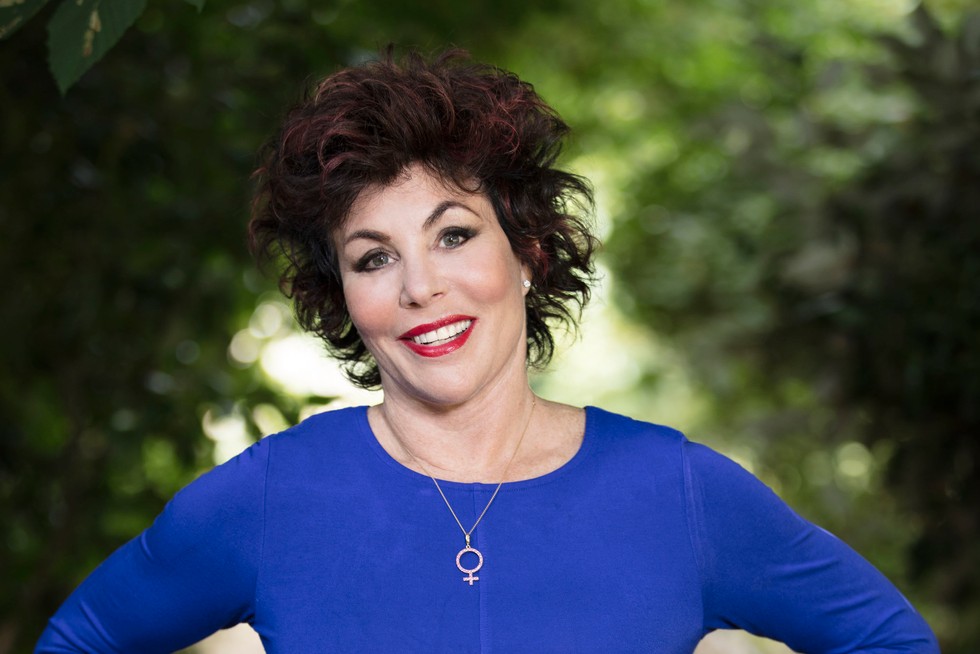Ruby Wax’s journey
Ruby Wax, the beloved American-British comedian and mental health advocate, has enjoyed a long and successful career in the entertainment industry. Known for her wit, humor, and charismatic personality, Ruby has captured the hearts of many fans throughout the years.
The significance of facelifts
As celebrities age, they often face increased scrutiny and pressure to maintain a youthful appearance. For some, facelifts can be an effective solution to help combat the signs of aging. In this article, we’ll discuss Ruby Wax’s decision to undergo a facelift, the benefits and risks of the procedure, and the impact it has had on her life and career.

Ruby Wax’s Facelift Decision A. Reasons behind her decision
Like many celebrities, Ruby Wax’s appearance is a significant aspect of her career. As she aged, she started to notice the signs of aging, such as sagging skin and wrinkles. She decided to undergo a facelift to help restore a more youthful appearance and maintain her confidence in the public eye.
The impact on her public image
Ruby’s decision to undergo a facelift garnered mixed reactions from the public. While some applauded her choice to take control of her appearance, others criticized her for succumbing to societal pressures. Regardless of the opinions of others, Ruby’s choice reflects her desire to feel confident and maintain her career.
What is a Facelift? A. Definition
A facelift, also known as rhytidectomy, is a cosmetic surgical procedure that aims to rejuvenate the face by removing excess skin, tightening underlying tissues, and re-draping the skin to create a more youthful appearance.
The surgical procedure
During a facelift, a plastic surgeon makes incisions around the ears and hairline to access the underlying facial tissues. The surgeon then tightens and repositions these tissues before removing excess skin and closing the incisions. The surgery typically takes several hours and is performed under general anesthesia or local anesthesia with sedation.

Types of Facelifts A. Traditional facelift
A traditional facelift addresses the lower two-thirds of the face, including the cheeks, jowls, and neck. It involves extensive incisions and provides the most dramatic results.
Mini facelift
A mini facelift, also known as a short-scar facelift or S-lift, targets the lower face and neck with smaller incisions and less tissue manipulation. This procedure is ideal for patients with mild to moderate signs of aging who desire a quicker recovery time.
Mid facelift
A mid facelift focuses on the midface, including the cheeks and lower eyelids. It aims to restore volume and lift sagging skin in this area, providing a rejuvenated appearance.
Deep plane facelift
A deep plane facelift involves repositioning the deeper layers of facial tissues, providing more natural-looking and long-lasting results. This procedure is best suited for patients with significant facial aging.
The Benefits of Facelifts A. Physical improvements
Facelifts can provide numerous physical improvements, such as reducing sagging skin, smoothing wrinkles, and redefining the jawline and neckline. These enhancements can create a more youthful and rejuvenated appearance.
Boost in confidence
For many individuals, undergoing a facelift can lead to increased self-confidence and self-esteem. Feeling more confident in one’s appearance can have a positive impact on personal and professional relationships.

The Risks and Complications of Facelifts A. General risks
As with any surgery, facelifts carry general risks such as infection, bleeding, and anesthesia complications. It’s essential to discuss these risks with your surgeon before undergoing the procedure.
Specific complications
Facelifts can also have specific complications, including scarring, facial nerve injury, and skin necrosis. Choosing a skilled and experienced surgeon can help minimize these risks.
Ruby Wax’s Facelift Experience A. Her chosen procedure
The details of Ruby Wax’s facelift procedure have not been publicly disclosed. However, based on her appearance, it’s likely she underwent a comprehensive facelift that addressed her concerns and achieved her desired results.
Recovery process
Ruby’s recovery process was likely similar to other facelift patients. Recovery typically involves swelling, bruising, and discomfort that subsides within a few weeks. Most patients can return to their regular activities within two to four weeks.
Celebrities and Facelifts A. Why celebrities choose facelifts
Celebrities often choose facelifts to maintain a youthful appearance and remain competitive in the entertainment industry. The pressure to look young can be intense, and many celebrities turn to cosmetic procedures to meet these demands.

Other celebrities who have undergone facelifts
Several celebrities have openly discussed their facelift experiences, including Jane Fonda, Sharon Osbourne, and Kris Jenner. These individuals often share their stories to help demystify the procedure and empower others to make informed decisions about their appearance.
Facelift Alternatives A. Non-surgical treatments
For those hesitant about undergoing surgery, non-surgical facelift alternatives are available. These treatments include dermal fillers, Botox, and laser resurfacing, which can provide temporary improvement in facial appearance.
Lifestyle changes
Adopting a healthy lifestyle, including a balanced diet, regular exercise, and proper skincare, can also help slow the aging process and maintain a youthful appearance. While these changes may not provide the dramatic results of a facelift, they can still contribute to overall skin health and well-being.
Conclusion
Ruby Wax’s decision to undergo a facelift reflects her desire to maintain a youthful appearance and continue thriving in the entertainment industry. Facelifts can provide physical improvements and boost self-confidence, but they also carry risks and complications. It’s crucial for individuals considering a facelift to weigh the benefits against the risks and explore non-surgical alternatives before making a decision.


